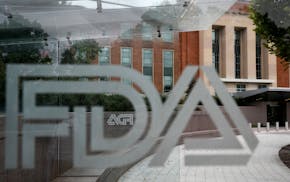WICHITA, Kan. – Forecasters knew there could be severe weather in southern Kansas on the first Friday in May 10 years ago — but nobody expected anything like what happened.
A massive tornado was churning north through the Gypsum Hills, illuminated only by lightning flashes.
"It lit up like a Christmas tree" on radar, said Mike Umscheid, a meteorologist with the National Weather Service who was on duty in the Dodge City branch on May 4, 2007.
The tornado's winds were so strong they registered only as garbled numbers on the radar. But storm chasers were calling in reports of a large wedge tornado, so Umscheid knew what those radar images meant.
A sense of dread wrestled with awe as the tornado marched on, showing no signs of weakening.
"It's just nature's wonder unfolding right in front of your eyes," Umscheid said. "At the same time, it's devastating if there's something directly in its path."
There was: Greensburg.
Umscheid issued a "tornado emergency" for the town of 1,383 people at 9:41 p.m. which said, in part, that a violent tornado was on a direct path for Greensburg.
Residents had nearly 30 minutes to get to shelter, thanks to the tornado warning issued and sirens that blared until the tornado knocked out the town's electricity.
"I think we would have had 240 deaths in Greensburg if the warning system did not exist that night," AccuWeather senior vice president Mike Smith said. "Fortunately, it did exist."
Greensburg, officials say, was an example of how many lives can be saved when warnings are issued and residents respond appropriately. The proliferation of smartphones, refined warning language and more sophisticated radar all offer the potential for better and more timely warnings when tornadoes threaten.
But that hasn't been happening.
The National Weather Service's tornado warning accuracy has declined "rather significantly since Greensburg," Smith said. "That is very, very worrisome."
Data collected by the weather service show that in 2011, warnings were issued beforehand for 75 percent of the tornadoes that formed. In 2015, the most recent year for which statistics were available, that rate was 58 percent.
In 2011, the weather service was able to give an average of 15 minutes' advance warning before a tornado touched down for the first time or caused damage. By 2015, the figure was eight minutes.
Studies are underway to find out why those numbers have fallen and what can be done to improve them, said Brad Ketcham, a meteorologist with the Wichita branch of the weather service.
The technology exists to make warnings more effective and timely, Ketcham and other forecasters say. Radar upgrades mean forecasters can see fresh scans of the atmosphere within a minute or two.
Current dual-polarization radar is "leaps and bounds better than what we've ever had," Umscheid said. "It's just amazing what we could see with Greensburg if we had that scanning strategy then."
In 2007, the weather service radar in Dodge City completed scans of the atmosphere every four to five minutes.
"The sinking feeling hit … when it was directly south of Greensburg," Umscheid said of the tornado. "That was the longest four minutes of my career."
Umscheid and other meteorologists hoped the tornado would veer just to the southeast of town. But the next scan showed the tornado signature northwest of the town.
"The signature [on radar] was still intense," and the line between the two most recent locations took it right through Greensburg, he said.
The Greensburg tornado was one of 22 produced by the same supercell thunderstorm. Some of the tornadoes were among the strongest ever recorded.
Greensburg was the first tornado ever rated EF-5 on the Enhanced Fujita scale, which measures tornado strength based on damage. Top winds exceeded 200 mph.
The tornado killed 11 people, but the death toll could easily have been much higher, weather officials say, because it was a huge tornado hitting a town late at night.

Remnants of bird flu virus found in pasteurized milk, FDA says
Mississippi lawmakers haggle over possible Medicaid expansion as their legislative session nears end
